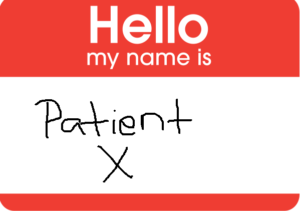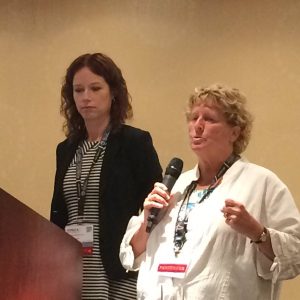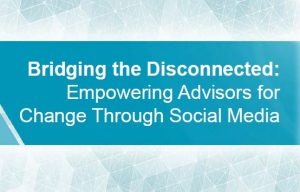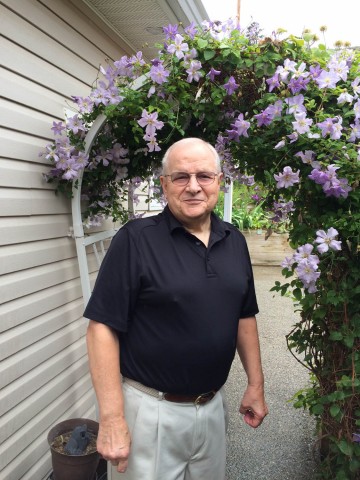On Thursday, September 28th, Dr. Verna Yiu, Alberta Health Service (AHS) president and CEO, announced that the AHS board had approved a deal that will see the implementation of an advanced clinical information system throughout Alberta. This information system will serve as an information hub for all of AHS’s clinical care areas, which include hospitals, ambulatory clinics and continuing care centres. Currently, there are approximately, 1,300 information systems being used, all of which will be consolidated by this one system. Click here to read more about this initiative and what it will mean to patients, providers and healthcare as a whole.
Tag Archives: patient engagement
Digital Health Technology – Benefits and Users
Patient First?

“Patient first” is a term that is often used in the health-care sector. However, are we first and foremost patients? Is that how we see ourselves?
According to Dr. Jordan Asher, he sees his patients differently. To him, he sees them as people first. “[I]n order for you to have a better health status, which includes healthcare, I need to think about you as a human being…We don’t look at people as diabetics; we look at them as people that have a bunch of life issues that happen to have diabetes.” How does this philosophy influence the manner in which Dr. Asher works with his patients? Click here to find out.
Tips for Patient Engagement
 The term “patient engagement” is one that is frequently stated and bantered about. However, what does it really mean? Why is such engagement important? How can patient engagement be fostered and promoted, so it becomes more than a theoretical idea or ideology and something that is real and realized?
The term “patient engagement” is one that is frequently stated and bantered about. However, what does it really mean? Why is such engagement important? How can patient engagement be fostered and promoted, so it becomes more than a theoretical idea or ideology and something that is real and realized?
According to Dr. Anhalt, an individual who treats pediatric patients with type 1 diabetes and chief medical officer for T1D Exchange, patient engagement is critical. Among other things, it sees patients becoming engaged in their own care, resulting in living healthier lives and experiencing better outcomes. Based on this understanding, Dr. Anhalt discusses tips for successful patient engagement. They include: educating patient and families, encouraging patients to engage in their health outside of a doctor’s office and using all patient interactions as opportunities for learning. To read the full article, click here.
Patient Voices Network – Volunteer and Make a Difference
Do you live in British Columbia? Do you want to make a positive difference to the province’s health care system? If so, you may wish to explore the Patient Voices Network. Ernie Hamm is an individual who chose to do just that and is very happy that he did.
Ernie Hamm loves to lend a helping hand and he’s been thoroughly enjoying donating his time with the Patient Voices Network (PVN). The Osoyoos senior, 77, has been volunteering with PVN for more than four years and has loved every minute of it. “I just volunteer in any area where they need help,” he said. … Click here to continue.
Clinical Trials – To Participate or Not

Clinical trials are becoming more popular and as such, the demand for participants is increasing. Unfortunately, oft times patients who are being asked to participate or are considering joining are unclear about the nature of the study and what their involvement would entail. This, in turn, makes deciding whether or not to get involved in the study more difficult.
To address this issue, The Center for Information & Study on Clinical Reseach Participation has a number of questions on its website that may be of assistance to individuals contemplating clinical trial involvement. Here are five of the questions they list.
1. What is the main purpose of this study?
2. Does the study involve a placebo or a treatment that is already on the market?
3. How will the treatment be given to me?
4. How long is the study going to last and what will I be asked to do as a participant?
5. What has been learned about the study treatment and are any study results published?
To reading the list, click here. What, if any, questions would you add to this list?
Our Presentation
 As mentioned in the previous post, Pts4Chg was presenting today at the International Institute for Patient and Family Centred Care (IPFCC) conference in New York City. The presentation entitled, “Bridging the Disconnected: Empowering Advisors for Change Through Social Media,” was well attended and well received, both at the conference and in the Twittersphere. According to participants and presenters, the level of enthusiasm, energy and engagement was high.
As mentioned in the previous post, Pts4Chg was presenting today at the International Institute for Patient and Family Centred Care (IPFCC) conference in New York City. The presentation entitled, “Bridging the Disconnected: Empowering Advisors for Change Through Social Media,” was well attended and well received, both at the conference and in the Twittersphere. According to participants and presenters, the level of enthusiasm, energy and engagement was high.
Below are just a few of the tweets sent out during the session.
|
Thank you to everyone who attended the session in person or virtually. Special thanks go to Kirsten, Holly, Shannon and Jamie. Your efforts made live tweeting the event possible. Thanks so much.
You Are Invited…
Pts4Chg is presenting at the International Institute for Patient and Family Centred Care (IPFCC) conference that is occurring from July 25-27th. As part of the presentation, a Twitter exchange will be taking place. Please consider joining us in the Twittersphere to converse with conference delegates, share ideas and have fun. 
Date: Tuesday, July 26, 2016
Time: 11:15 a.m. EST
Location: In the Twittersphere at #Pts4ChgNYC
Are patients the health care system’s free labor?
Have you ever felt overburdened by the amount of paperwork, phone calls, e-mails, appointments, etc., associated with navigating the health care system? If so, you are not alone.
In the article, “Unpaid, stressed, and confused: patients are the health care system’s free labor,” Sarah Kliff describes how the health care system can place considerable burden on the patient him/herself. This realization came about from her own experience managing a chronic foot injury. As Kliff explains:
What I didn’t understand was the burden patients face in managing the health care system: a massive web of doctors, insurers, pharmacies, and other siloed actors that seem intent on not talking with one another. That unenviable task gets left to the patient, the secret glue that holds the system together.
For me, this feels like a part-time job where the pay is lousy, the hours inconvenient, and the stakes incredibly high. It’s up to me to ferry medical records between different providers, to track down a pharmacy that can fill my prescription, and to talk to my insurance when a treatment gets denied to find out why.
Click here to read the full article.
Drug-free protocol for treating chronic pain?
 Chronic pain is one of the most taxing health problems facing individuals. Although the pain can be problematic in and of itself, it can be accompanied by depression, loss of livelihood and independence and/or addiction to prescription pain killers.
Chronic pain is one of the most taxing health problems facing individuals. Although the pain can be problematic in and of itself, it can be accompanied by depression, loss of livelihood and independence and/or addiction to prescription pain killers.
Joan Broderick, senior behavioral scientist and associate director of the Center for Self-Report Science at USC Dornsife’s Center for Economic and Social Research (CESR), suggests an alternative to drug use. Click here to discover what it is.



